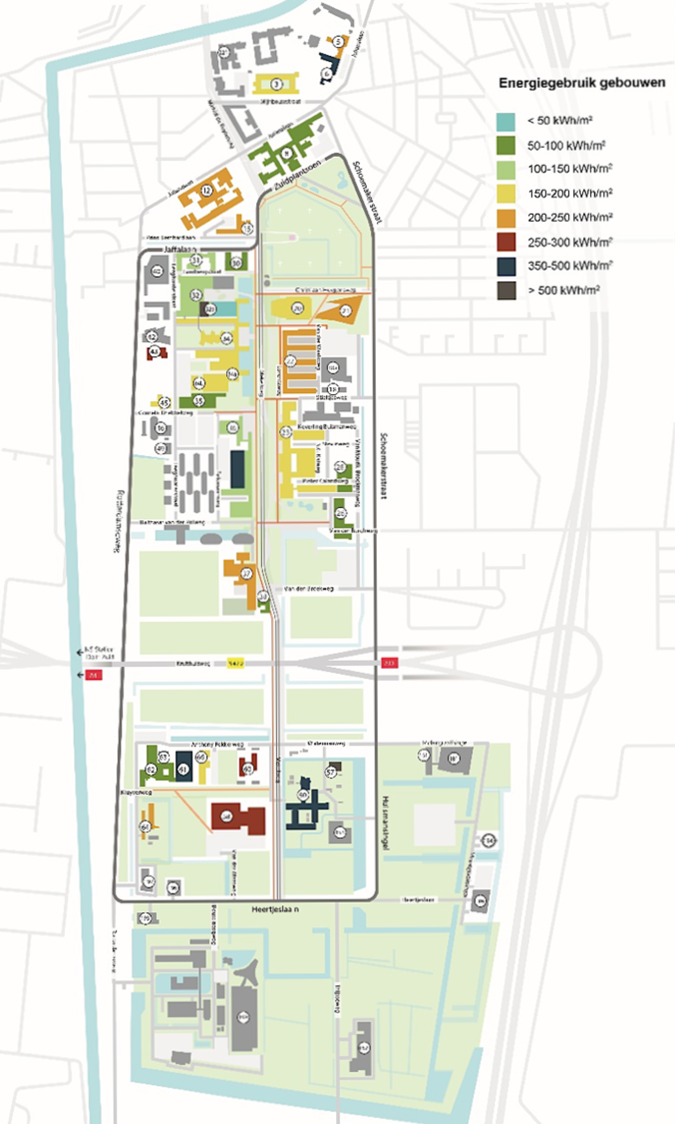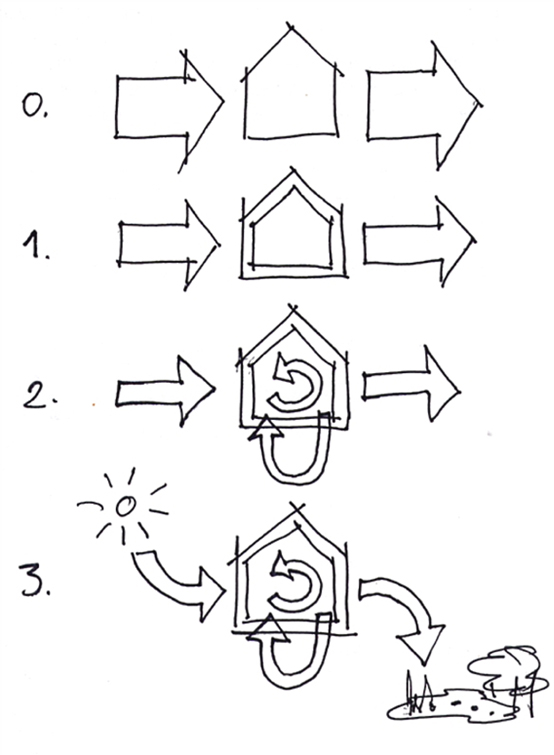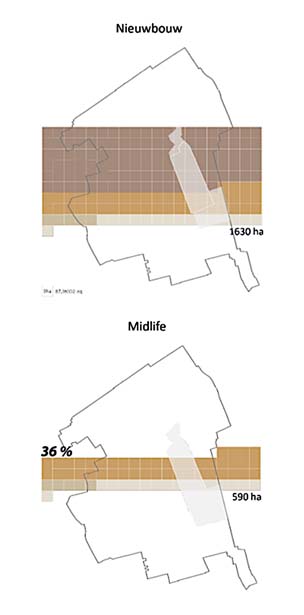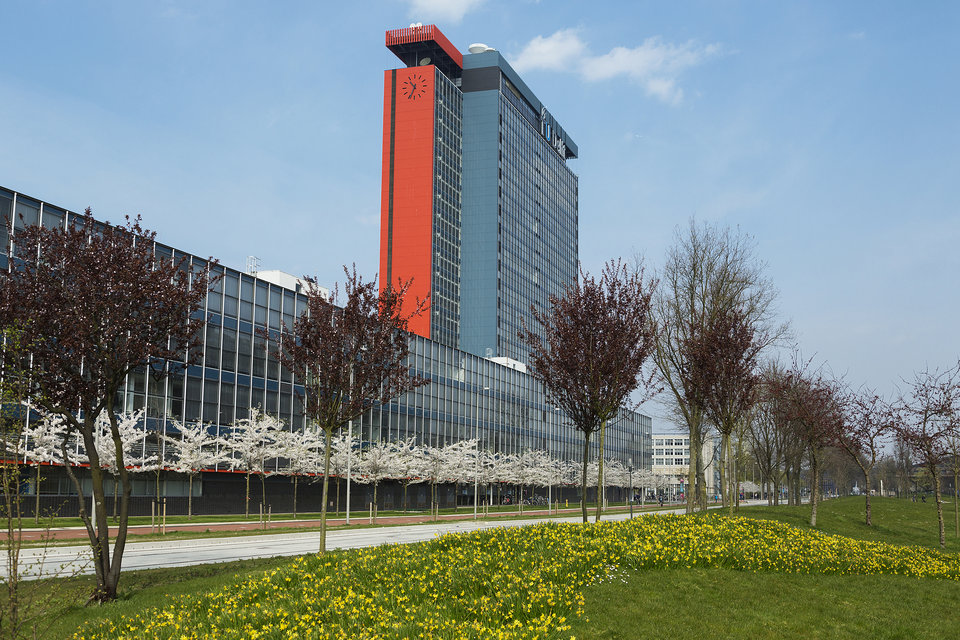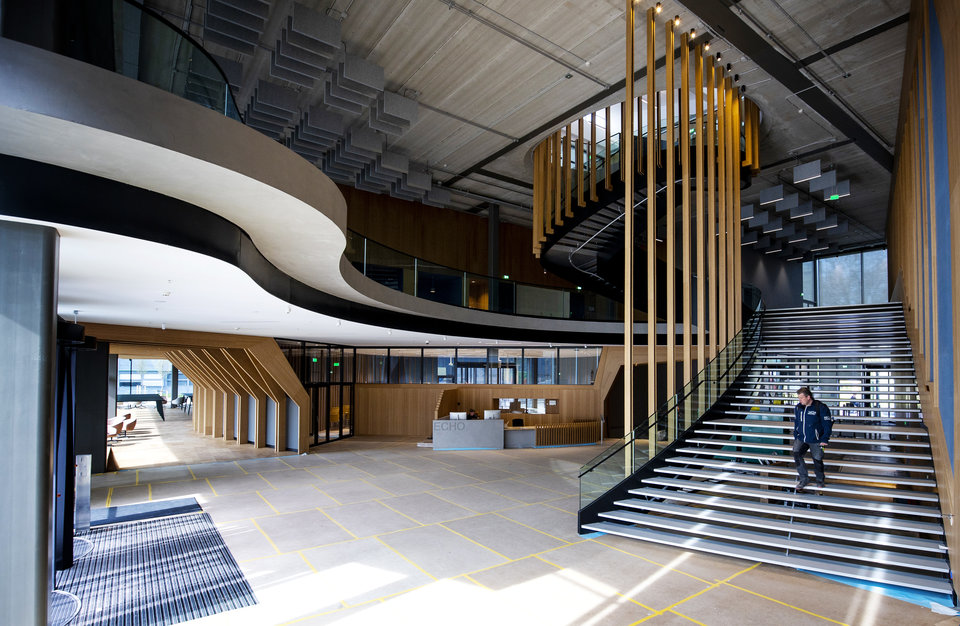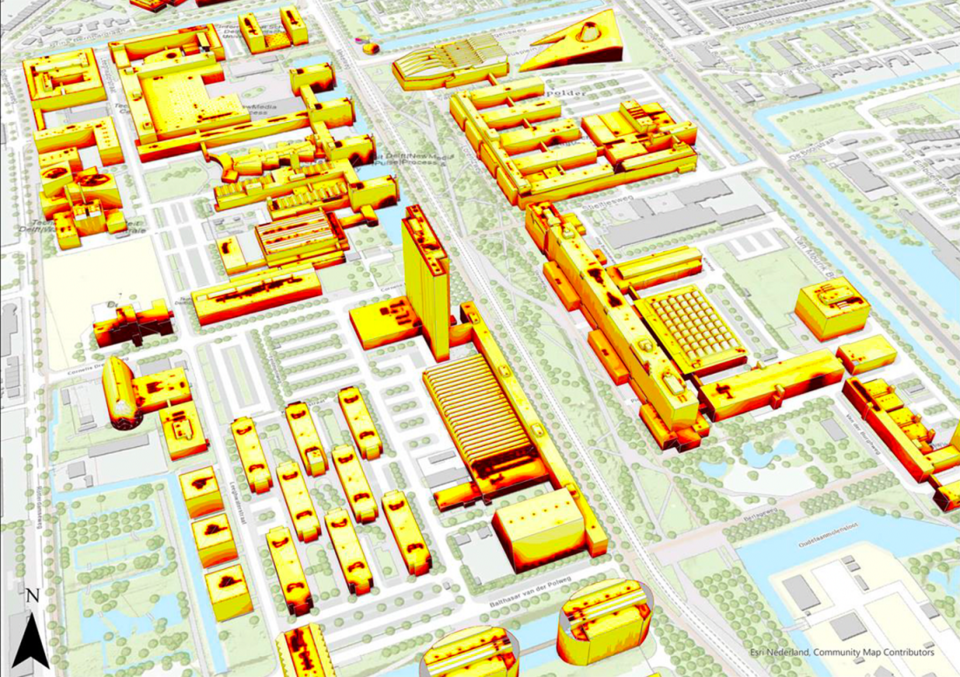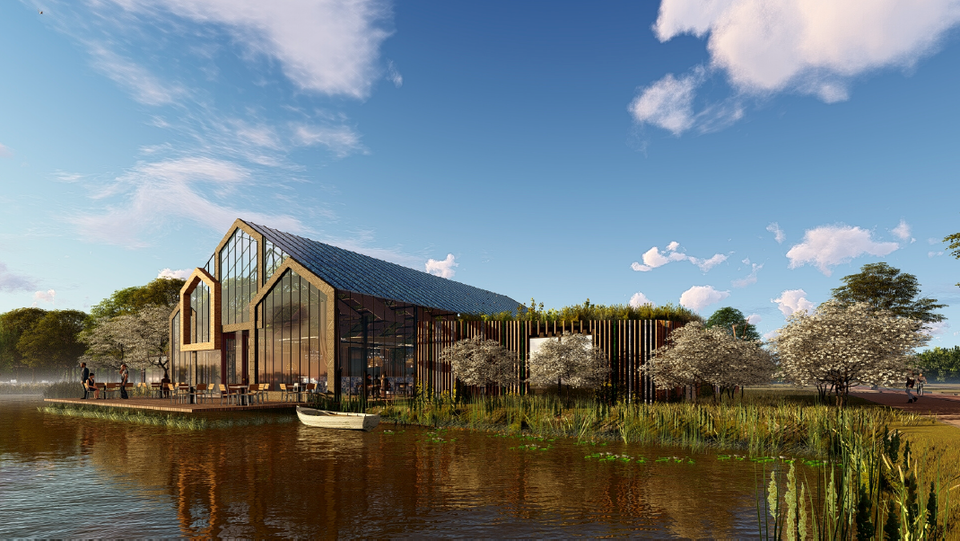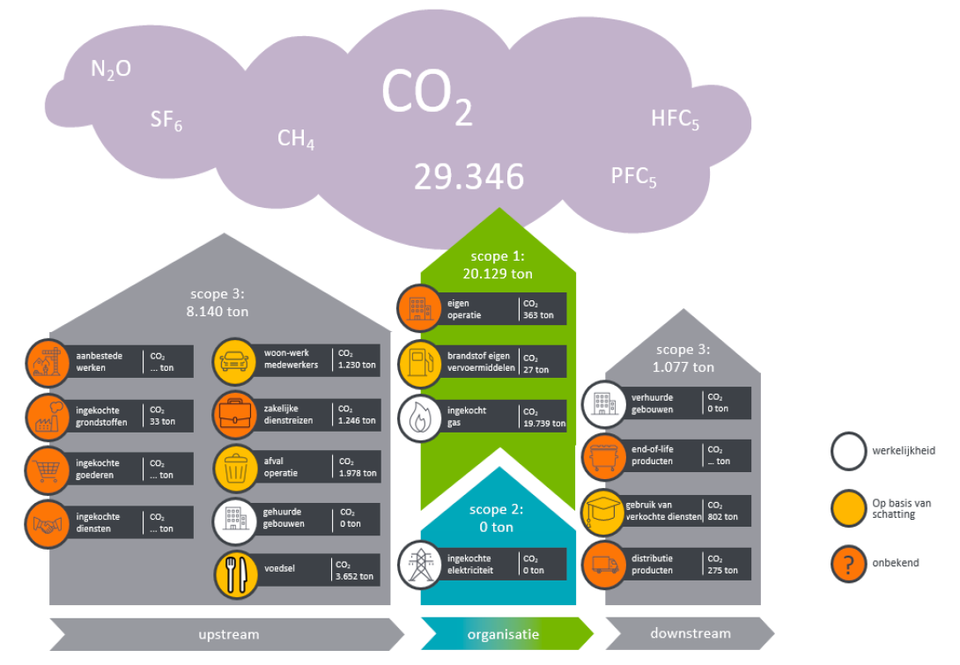Energy use on the campus is the next to greatest factor in TU Delft’s carbon emissions. This energy is primarily used – directly or indirectly – in the buildings. These need to be carbon neutral and circular by 2030. Several key performance indicators were formulated to reach this goal. The Construction & Renovation team is working to accomplish this.
Design strategy
In line with the New Stepped Strategy, energy neutrality can be reached by the following actions: 1. Reduce the energy demand: halve the energy consumption (heat and electricity) per m2 compared to 2018; 2. Reuse residual energy, by smart exchange and storage of waste heat; 3. Produce sustainable energy from renewable sources: generate 100% of heat on campus, generate 50% of electricity on campus, and of what cannot be generated on campus: purchase that from renewable sources.
Embodied carbon
For decades the focus for energy efficiency has laid on operational energy of buildings, products and vehicles. The embodied energy – used during resource extraction, production, transport, construction and waste processing – should however not be ignored. The largest part of the embodied energy and carbon of buildings comes from the load-bearing structure, followed by the building envelope, and the building services and interior walls. That is why the university first looks into renovating a new building before building a new one.
Circular design
In a circular economy, all resources come from sustainably managed renewable sources or they are of a technical nature and can be infinitely reused. New materials and products need to be designed, produced, and applied with circularity in mind. Materials from existing buildings should be processed in a circular manner during maintenance cycles and end-of-use stages. TU Delft strongly focuses on circular (re)design of buildings.
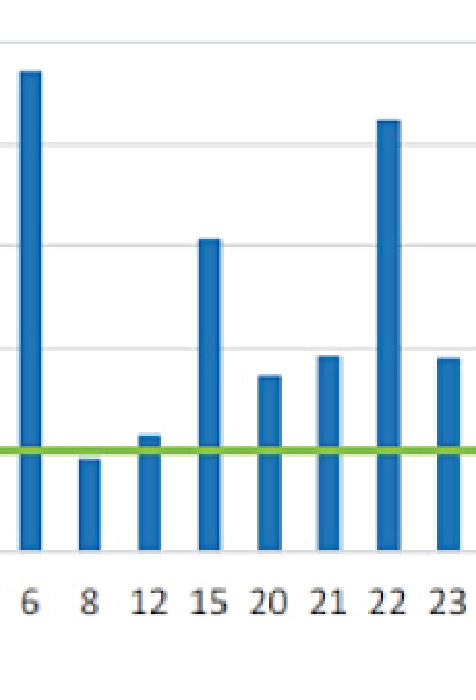
Monitoring
The 33 existing buildings on the TU Delft campus are carefully monitored. The energy use is measured every month, divided into gas consumption, heat supply and electricity use. It is also important to get a clear overview that shows the type of materials and quantity of materials used in the buildings of TU Delft. Such ‘material-ID cards’ facilitate a streamlined material-exchange, according to the most optimal circular strategy at a given time.

